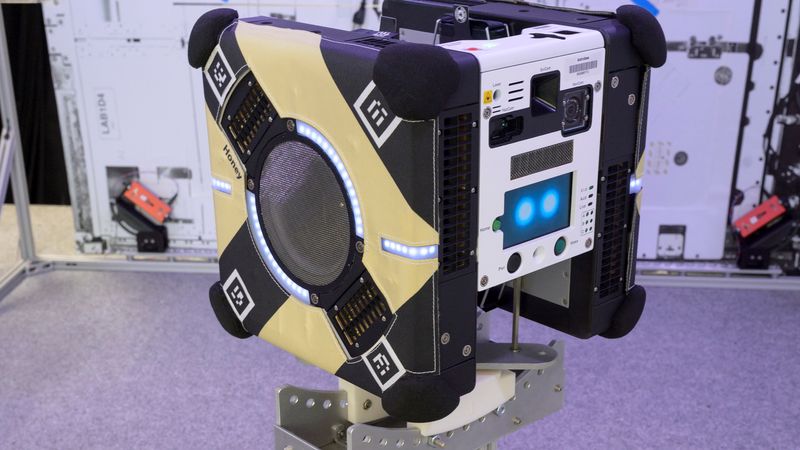Astrobee Successfully Demonstrates Rendezvous Between Robotic Craft and Space Debris
The Astrobee free-flying robots, developed in and managed by the NASA Ames Intelligent Systems Division, were setup for the second session to test an autonomous rendezvous algorithm and assist the ground team in monitoring Astrobee performance of autonomous robotic rendezvous with a tumbling target.

The Astrobee free-flying robots, developed in and managed by the NASA Ames Intelligent Systems Division, were setup for the second session to test an autonomous rendezvous algorithm and assist the ground team in monitoring Astrobee performance of autonomous robotic rendezvous with a tumbling target. The Relative Operations for Autonomous Maneuvers (ROAM) tests demonstrate processes for a robotic craft to rendezvous with debris in space. Space debris includes satellites that could be repaired or taken out of orbit; but many of these objects are tumbling, which makes rendezvous and docking challenging. ROAM uses the International Space Station’s (ISS) Astrobee robots to observe and understand how targets tumble and uses this information to plan ways to safely reach them.
Adaptations to Astrobee's localization system enabled successful tumbles of a target Astrobee, providing sufficient tumble stability for an autonomous rendezvous pipeline to be used. Multiple "full pipeline" tests were conducted, including successful complete rendezvous tests. Other, unsuccessful rendezvous tests will be used to analyze algorithm performance in the presence of challenging localization and computational constraints. The primary test objectives were fully met over a total of 20 tests. Secondary objectives were partially met; "full pipeline" tests over the most challenging configuration options were not performed, though validation for the Guidance, Navigation, and Control (GNC) subsystem custom estimator (EKF) and for robust control were. This activity concludes the ROAM investigation, which has demonstrated successful on-orbit rendezvous with unknown tumbling targets. Future work will extend robustness guarantees and overall algorithm reliability, particularly in the face of localization and computational limitations.
BACKGROUND: The Astrobees are next-generation free-flying robots that operate in the interior of the ISS. Their primary purpose is to provide a flexible platform for research on zero-gravity free-flying robotics, with the ability to carry a wide variety of future research payloads and guest science software. They also serve utility functions: as free-flying cameras to record video of astronaut activities, and as mobile sensor platforms to conduct surveys of the ISS. They were developed under the Human Exploration Telerobotics 2 (HET2) project and are currently managed by the Astrobee Facility project.
The HET2 project demonstrates how telerobotics — robots remotely operated by astronauts or ground controllers — can be used to perform a variety of routine, highly repetitive, dangerous, and long-duration tasks. The primary goal of HET is to improve NASA’s understanding of the requirements, benefits, limitations, costs, and risks of integrating telerobotics into future deep-space exploration missions.